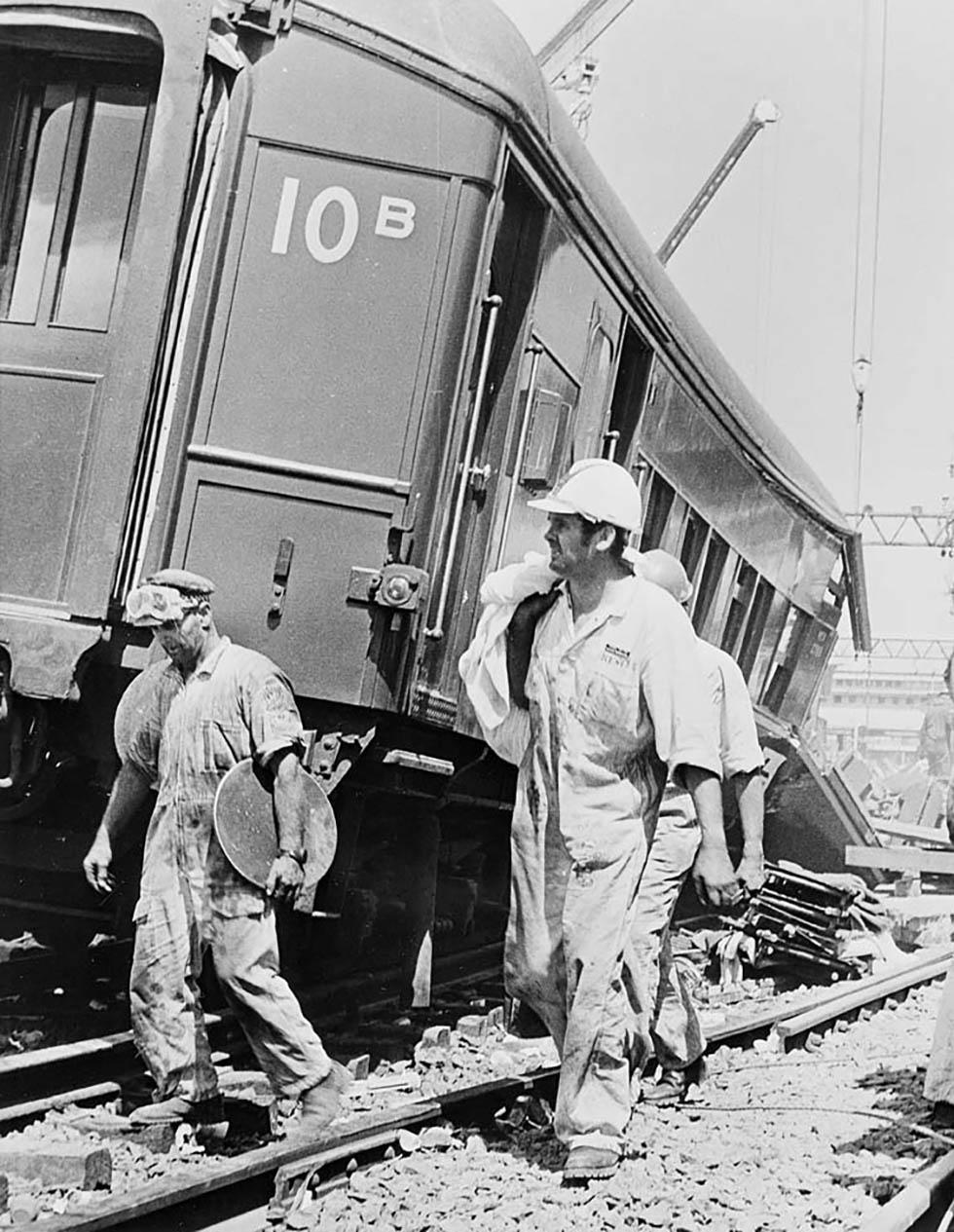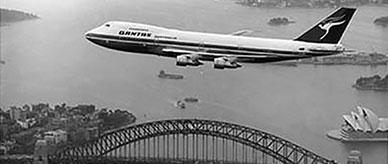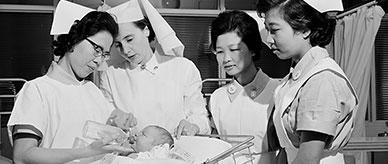


About this record
This black-and-white photograph shows three of the New South Wales Police Rescue Squad at work following the Granville rail disaster in New South Wales in January 1977. It shows the Chief of the Police Rescue Squad, Sergeant Joe Beecroft, carrying a disc-shaped jacking base, and Gerry Bushman of the Volunteer Rescue Association (VRA) Penrith, carrying equipment over his shoulder. The third member of the team cannot be identified. They are walking beside one of the carriages, 10B, that has sustained extensive damage. The police rescue workers are wearing protective gear.
Educational value
- The photograph records the most severe railway disaster to occur in Australia, when a crowded Sydney-bound commuter train from Mount Victoria in the Blue Mountains crashed into a concrete and steel bridge at Granville, a western suburb of Sydney, on Tuesday 18 January 1977. The train, consisting of eight carriages, brought down the overhead road bridge onto two of the passenger carriages, killing 83 people and injuring 213.
- The Police Rescue Squad, with officers from all over Sydney, was responsible for rescuing the injured passengers and for body recovery, but had important additional duties. Members of the squad were required to conduct area control, make sure that the crime scene was preserved in the most intact state possible for the following police forensics team, and recover property and exhibits. They were also responsible for declaring when the scene was safe enough for other workers to enter.
- A range of equipment was used at the scene. The disc seen carried by Sergeant Beecroft was a jacking base used to spread the load of the lifting jacks so the train carriage could be raised up to rescue trapped people. Rescue workers used pneumatic drills to start breaking up the bridge, needing to drill through 1-metre-thick concrete to reach victims. The use of safety glasses, overalls and helmets shows the paramount importance of safety procedures.
- The rescue operation was dangerous and complicated and members from all the rescue services worked though the night in a desperate search for more survivors. By midnight 21 bodies had been freed from the mangled carriages crushed when a 300-tonne section of the bridge collapsed. The southern section of the bridge was hanging precariously from the roadway and police had to dynamite it for fear of it toppling onto rescuers.
- The danger of the operation greatly increased as gas from four pressure cylinders, used for heating the mountain trains, leaked out and built up under the fallen slab of bridge. The cylinders were crushed and broken beneath the slab and rescue workers used all available compressors to reverse the air lines and blow the gases out. The fire brigade provided one of their large capacity fresh air blowers, which proved the turning point in ridding the space of gas.
- While the rescue of many of the people trapped in this wreckage was successful, it was found that several died of 'crush syndrome' shortly afterwards. This syndrome is a result of the sudden release of muscle myoglobins that have built up in the body during the crush, which can cause renal failure. The knowledge gained at Granville resulted in changes to rescue procedures for these kinds of accidents.
Acknowledgments
Learning resource text © Education Services Australia Limited and the National Archives of Australia 2010.
Related themes
Need help with your research?
Learn how to interpret primary sources, use our collection and more.


